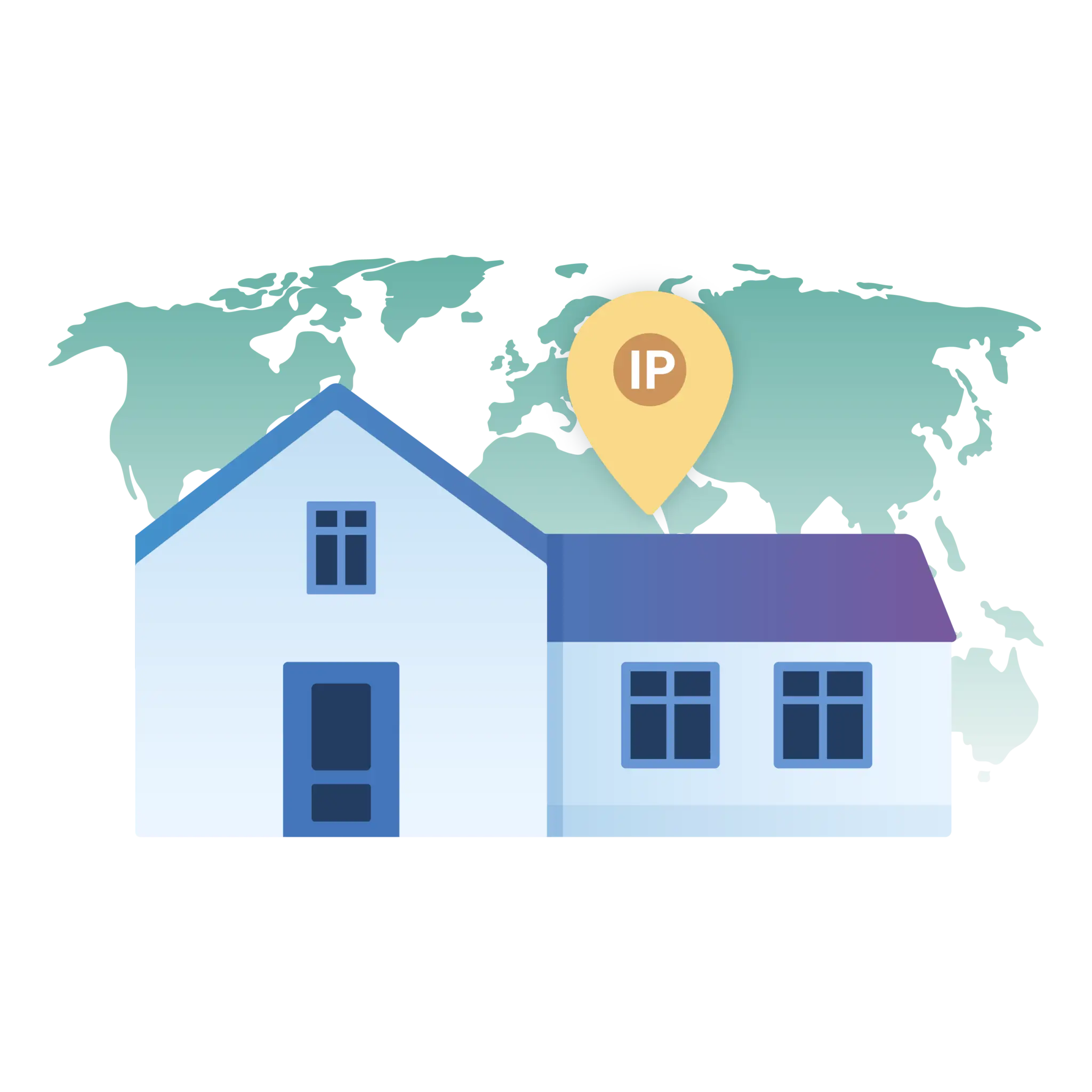In today’s hyper-regulated digital landscape, residential proxies have evolved from a niche tool to a must-have solution for businesses, developers, and marketers. With AI-driven detection systems, stricter geo-blocks, and advanced anti-bot measures, traditional proxies (and even some VPNs) are no longer enough.
So, what exactly is a residential proxy in 2025?
Simply put, it’s an intermediary that routes your internet traffic through real, ISP-assigned IP addresses—making your requests appear as if they’re coming from an ordinary home user rather than a data center.
But not all residential proxies are the same. In 2025, we now have AI-optimized static proxies, mobile-first rotating IPs, and even blockchain-powered P2P networks.
👉 Want to bypass the toughest blocks? [Try Our 2025 Residential Proxies Risk-Free]

What Makes Residential Proxies Different in 2025?
1. They’re Smarter (Thanks to AI)
Unlike older proxies, modern residential IPs now use machine learning to:
- Mimic human browsing patterns
- Auto-rotate IPs at optimal intervals
- Avoid detection by next-gen bot filters
2. They’re More Diverse
2025’s residential proxies come in multiple forms:
✔ Static Residential IPs – For long-term sessions (e.g., social media accounts)
✔ Rotating Residential IPs – For large-scale scraping
✔ Mobile Residential IPs – Essential for app-based tasks
✔ ISP-Backed Proxies – The most trusted for enterprise use
3. They’re Faster & More Reliable
With 5G and IPv6 adoption, modern residential proxies offer near-instant speeds—critical for real-time data tasks.
The 5 Key Types of Residential Proxies in 2025 (And When to Use Each)
| Type | Best For | 2025 Upgrades |
|---|---|---|
| Static Residential | Social media, brand monitoring | AI-managed persistence |
| Rotating Residential | Web scraping, sneaker bots | Smart IP cycling |
| Mobile Residential | App testing, ad verification | 5G-optimized routing |
| ISP-Backed Proxies | Banking, compliance tasks | Carrier-grade uptime (99.99%) |
| P2P Residential | Web3, decentralized apps | Blockchain-verified IPs |
Top 2025 Use Cases for Residential Proxies
1. AI & Machine Learning Data Collection
- Scrape clean training data without CAPTCHAs
- Bypass anti-bot systems on knowledge hubs
2. Global E-Commerce & Price Monitoring
- Track competitor pricing in real-time
- Avoid geo-based price discrimination
3. Social Media Management at Scale
- Safely run multiple accounts (Instagram, TikTok, Twitter)
- Automate posts without triggering bans
4. Ad Verification & Fraud Prevention
- Check if ads display correctly worldwide
- Detect fake clicks and impressions
5. Next-Gen Web Scraping
- Extract data from JavaScript-heavy sites
- Bypass advanced anti-scraping tech (like PerimeterX)
How to Choose the Best Residential Proxy Provider in 2025
Not all providers keep up with the latest tech. Here’s what to look for:
✅ AI-Optimized IP Rotation – Avoids detection better than random switching
✅ Mobile & IPv6 Support – Critical for modern apps and websites
✅ High Success Rate (>98%) – Fewer failed requests = better ROI
✅ Transparent Pricing – No hidden throttling or overage fees
Pro Tip: Free proxies are dangerous in 2025—they’re often blacklisted or malware-infected.
FAQ: Residential Proxies in 2025
Q: Are residential proxies legal?
A: Yes, if used ethically (no fraud or hacking). Always check local laws.
Q: Can I use them for streaming (Netflix, Hulu)?
A: Some ISP-backed proxies work, but streaming platforms aggressively block most.
Q: How much do they cost?
A: Between $10–$50/GB, depending on features. Bulk discounts often available.
Q: What’s the biggest mistake users make?
A: Using datacenter proxies for tasks requiring real-user IPs—leading to instant bans.
Final Verdict: Are Residential Proxies Worth It in 2025?
Absolutely. Whether you're:
- A data scientist training AI models
- An e-commerce seller monitoring prices
- A growth marketer managing 100+ accounts
...residential proxies are the only way to operate at scale without detection.
🚀 Ready for 2025’s best proxies? [Get Started with UnoProxy]


